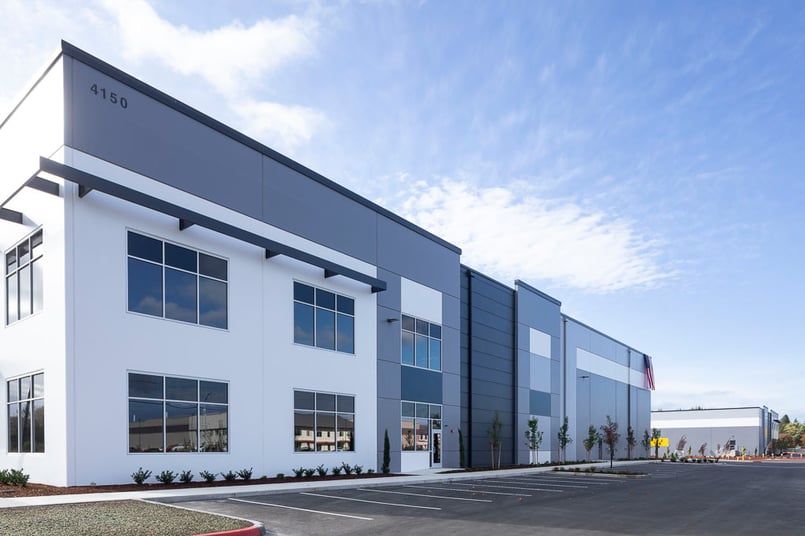
In the ever-evolving landscape of commercial real estate, the design of commercial buildings has taken center stage. Gone are the days when functionality was the sole criterion for evaluating a commercial property. Today, modern commercial buildings must strike a delicate balance between form and function, seamlessly integrating aesthetics, sustainability, and technology to meet the evolving needs of businesses and tenants. In this article, we will explore the key elements and principles of designing functional and modern commercial buildings that not only attract investors but also provide a superior experience for occupants.
1. Location and Accessibility
Before delving into the architectural intricacies of a commercial building, it's crucial to address the importance of location and accessibility. A well-located building can make or break its success. Proximity to transportation hubs, major highways, and amenities is paramount. Accessibility for both employees and customers should be easy and convenient, promoting foot traffic and ensuring long-term tenant satisfaction.
2. Sustainable Design
Modern commercial buildings must embrace sustainability as a core principle. Green building practices not only reduce environmental impact but also contribute to long-term cost savings. Incorporating energy-efficient HVAC systems, LED lighting, and renewable energy sources like solar panels can significantly reduce operational expenses. Additionally, green roofs, rainwater harvesting, and efficient insulation can further enhance a building's sustainability credentials.
3. Flexibility and Adaptability
Flexibility is key in designing functional and modern commercial buildings. Spaces should be adaptable to accommodate changing tenant needs. An open floor plan with modular partitions can easily reconfigure spaces, making it attractive to a wide range of businesses. This adaptability ensures that the building remains relevant and appealing to tenants over time.
4. Aesthetics and Architectural Innovation
Aesthetics play a crucial role in the modern commercial building landscape. Attractive architecture not only enhances the building's marketability but also fosters a positive working environment. Consider the use of innovative design elements, such as glass facades, dynamic lighting, and captivating entryways, to create a memorable first impression. Collaborating with visionary architects can yield remarkable results.
5. Technology Integration
In an increasingly digital world, technology integration is non-negotiable. Smart building systems that control lighting, heating, and cooling not only enhance energy efficiency but also provide a more comfortable environment for occupants. Additionally, high-speed internet connectivity and the infrastructure to support advanced technologies like IoT (Internet of Things) and 5G networks are essential for attracting tech-savvy tenants.
6. Safety and Security
Safety and security are paramount concerns for commercial building occupants. Implementing state-of-the-art security systems, including surveillance cameras, access control, and emergency response protocols, is essential. Tenants and investors alike value buildings that prioritize the safety of their occupants.
7. Ample Parking and Amenities
Parking availability is a crucial consideration for commercial buildings, especially in urban areas. Sufficient parking space for both employees and visitors can greatly enhance a building's appeal. Additionally, on-site amenities like fitness centers, cafes, and outdoor green spaces contribute to a superior tenant experience.
8. Sustainable Landscaping
The exterior of a modern commercial building is just as important as its interior. Sustainable landscaping practices can significantly enhance the overall aesthetic and environmental impact of a property. Consider drought-resistant plants, green spaces, and water-efficient irrigation systems to create an appealing and eco-friendly exterior.
9. Regulatory ComplianceNavigating the complex web of building codes and regulations is essential in the design and construction of commercial properties. Ensuring compliance with local zoning laws, ADA (Americans with Disabilities Act) requirements, and other relevant regulations is crucial to avoid costly legal issues down the line.
10. Market Research and Tenant Preferences
Finally, designing a modern commercial building should be informed by thorough market research and an understanding of tenant preferences. Stay attuned to industry trends and tenant demands. Conduct surveys and engage with potential tenants to gain insights into their needs and expectations. This proactive approach can give your commercial building a competitive edge.
Designing functional and modern commercial buildings is a multifaceted endeavor that requires a holistic approach. By considering location, sustainability, flexibility, aesthetics, technology, safety, amenities, landscaping, regulatory compliance, and tenant preferences, you can create a commercial property that not only attracts investors but also fosters long-term tenant satisfaction and success. In the dynamic world of commercial real estate, adaptability and a commitment to innovation are the keys to building a brighter future.
TAGS: Musings
